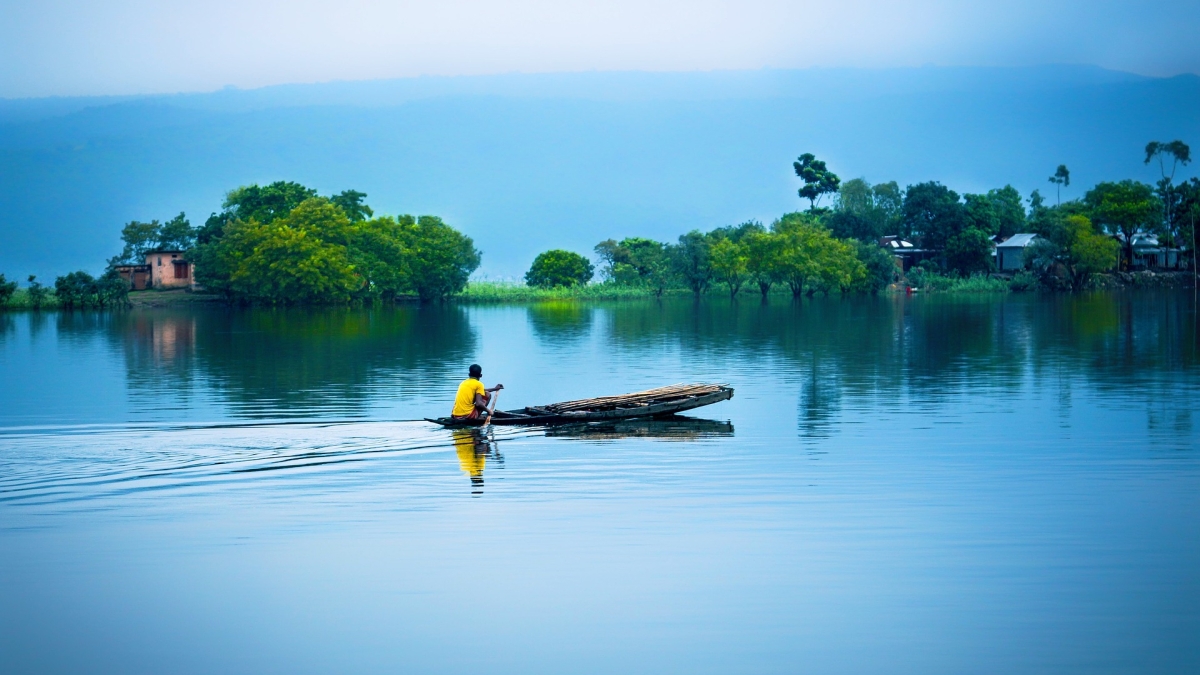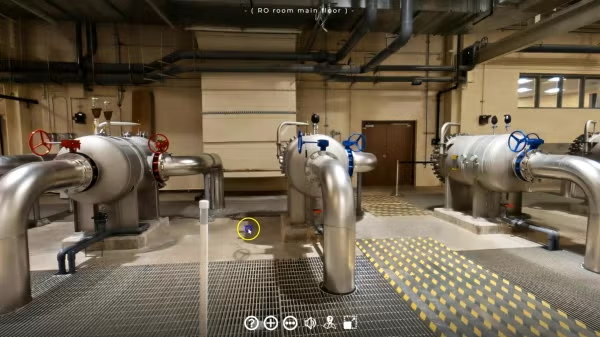ASU expert on how sea-level change is affecting Bangladesh

Photo from Pixabay
Between rising temperatures, melting glaciers and intense hurricanes, climate change not only has long-term effects but is impacting our everyday lives.
According to NASA, sea levels will rise 1 to 4 feet by 2100. Sea rise combined with storm surges can cause flooding in many regions. A community’s economy and migration might be impacted by these environmental effects.
Arizona State University Assistant Professor Valerie Mueller and Joyce Chen from Ohio State University look into this topic in a recently published paper at Nature Climate Change titled “Coastal climate change, soil salinity and human migration in Bangladesh.”
Mueller, who is part of the School of Politics and Global Studies, speaks below about about how sea-level change affects farming communities in Bangladesh:
Question: Why did you choose Bangladesh specifically when looking at the impact of climate change and accelerating sea-level rise?
Answer: Both my co-author and I have been studying the migration and employment patterns in Bangladesh for years. We've been trying to understand how rural households choose members to engage in migration or diversify out of agricultural employment to become more resilient to disasters and get out of poverty.
Scientific studies have highlighted Bangladesh as one of the leading countries vulnerable to increases in sea-level rise and sea-level extremes. Its coastal areas have an extremely high population density. Moreover, as a delta, Bangladesh faces a number of other risks that will intensify with climate change — water logging, river bank erosion, sedimentation, etc.
This poses an interesting problem from an adaptation point of view in two ways. First, as soil salinity and flooding worsens, it is unlikely that farmers will be able to practice traditional cultivation practices along the coast. Second, as more people are displaced from the agricultural sector due to changes in soil properties, it is unlikely that cities, such as Dhaka, where people generally migrate for work, will be able to accommodate the surplus labor from these areas.
Q: How do you think we can prepare coastal farmers in other regions for projected sea-level rises and increased soil salinity based on your findings?
A: One interesting finding from our study is that we show that some households are already adapting to changes in soil salinity by converting higher proportions of their land (land that was once used for rice production) to aquaculture. The inundated land is conducive for the production of fish species that are tolerant to salinity, such as shrimp. The problem is that this option is not available to all farmers. As the production of shrimp for exports has become highly profitable, a fraction of farmers have taken advantage of this opportunity and acquired the land of other farmers to consolidate and benefit from economies of scale. The expansion of aquaculture can generate jobs for the local workers who used to farm, but many people will still need to search for work elsewhere.
I suspect that coastal farmers in other regions are undergoing similar adaptive responses in terms of shifting their agricultural practices. As far as we know, there are no saline-tolerant varieties that can withstand the conditions in these areas to continue producing staple crops in the future. Thus, in Bangladesh and elsewhere, there will be a few things we will need to think about more carefully. First, if household adaptive responses to soil salinity are to convert land to produce shrimp or other goods targeted for exports, what sort of local food-security implications will there be for the general population? For example, once land is taken out of traditional production, then staple crops may become pricier for locals to afford. Second, where will those displaced from traditional production practices be able to work? Will the labor markets be able to naturally accommodate the surplus labor, or will we need to think about resettlement programs for those who might face these issues as early as 2050? Our study provides suggestive evidence that migration as adaptation may become more difficult for coastal farmers as saline contamination worsens.
We are trying to work on models that can predict how soon that will happen under certain emission scenarios.
— Valerie Mueller
Q: How do you think internal migration will affect the non-coastal farmers?
A: I am a co-PI on a SESYNC Pursuit grant that is forcing us to think through these dynamic issues more carefully. As I mentioned above, if coastal land is taken out of crop production over time, then we might see price responses. Non-coastal farmers who produce rice, for instance, may actually benefit from higher prices given the reduction in the supply of rice. But consumers, those who purchase rice for consumption, might lose given their loss of purchasing power. Non-coastal farmers may also benefit by facing lower costs for hired labor. If people from the coast move to work on farms in other areas, then the shift in the supply of agricultural wage labor might reduce wages. This can make it more affordable to hire workers. However, the workers themselves might be able to afford less given their reduction in income. It is not clear what the net welfare effect of these mechanisms will be. These are issues the team involved in my SESYNC Pursuit are trying to work out, using different modeling approaches to better account for these dynamics.
Q: Would you anticipate that over time, farmers who did not migrate will eventually eliminate their crop revenue completely as soil salinity continues to increase?
A: Yes, it is possible that once sea-level rise reaches an uninhabitable level in some parts of the coast, land will be taken both out of crop and fish production. In areas where farmers can still live, soil salinity thresholds will likely exceed those that can sustain plant life. We are trying to work on models that can predict how soon that will happen under certain emission scenarios.
Q: What are the next steps in your research on this topic?
A: As I mentioned before, this is the first study of a larger project. A team of social scientists are trying to make more dynamic predictions of where we think people will move to within and outside of Bangladesh using the regional sea-level rise predictions of Peter Clark at Oregon State University and his team of scientists. Here, we will acknowledge that whether people move and where they move might change from historical patterns, upon considering that a significant proportion of coastal land is taken out of production, there are cost-of-living effects that prevent people from moving to once-desirable locations, and other social considerations. We will also look at feedback effects — how adaptation efforts, such as aquaculture and irrigation, may exacerbate saline contamination. We are also expanding the scope of countries to include the U.S. and other developing countries facing similar levels of vulnerability.
More Environment and sustainability

Homes for songbirds: Protecting Lucy’s warblers in the urban desert
Each spring, tiny Lucy’s warblers, with their soft gray plumage and rusty crown, return to the Arizona desert, flitting through…

Public education project brings new water recycling process to life
A new virtual reality project developed by an interdisciplinary team at Arizona State University has earned the 2025…

ASU team creates decision-making framework to improve conservation efficiency
Conserving the world’s ecosystems is a hard job — especially in times of climate change, large-scale landscape destruction and…

